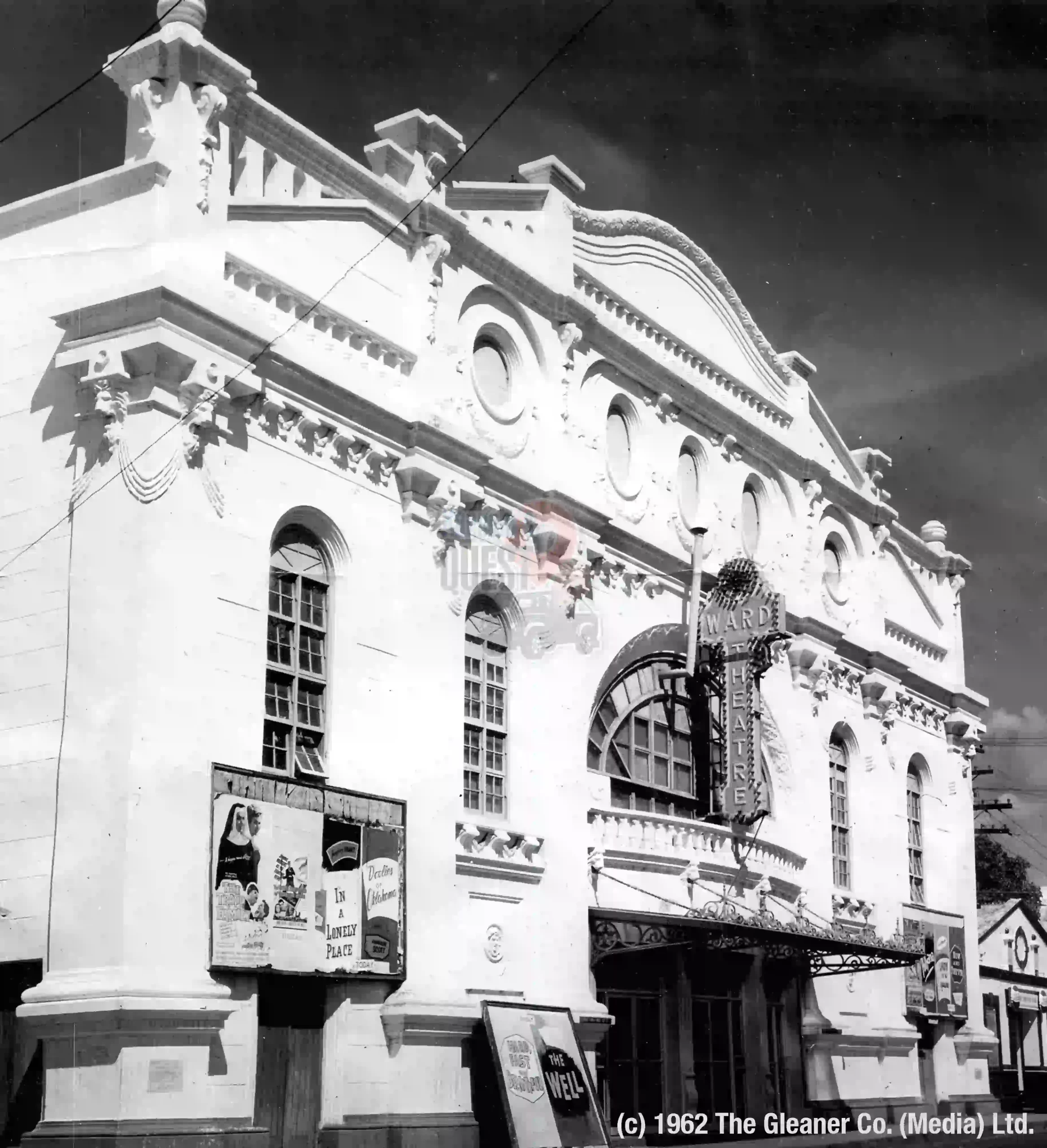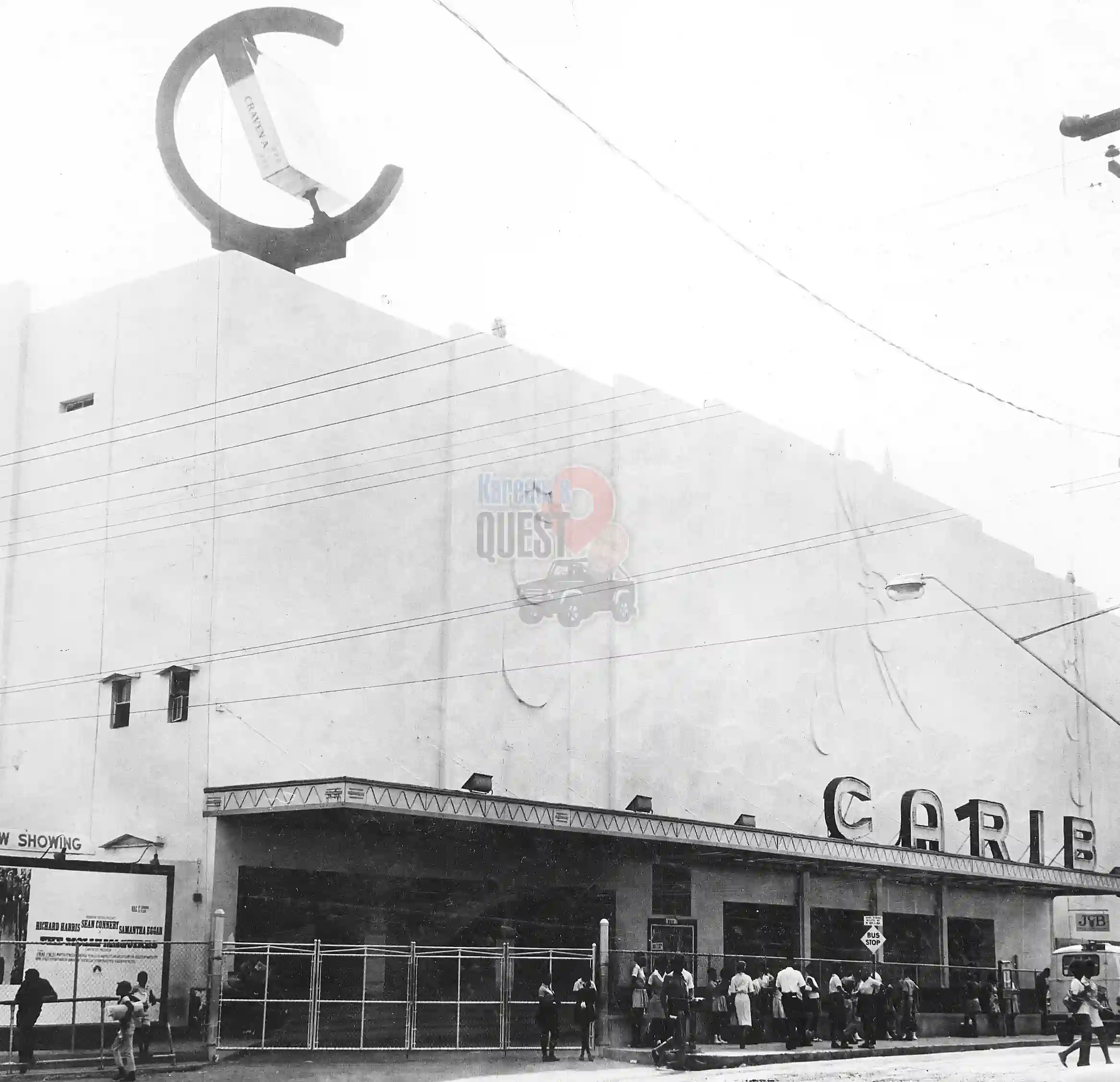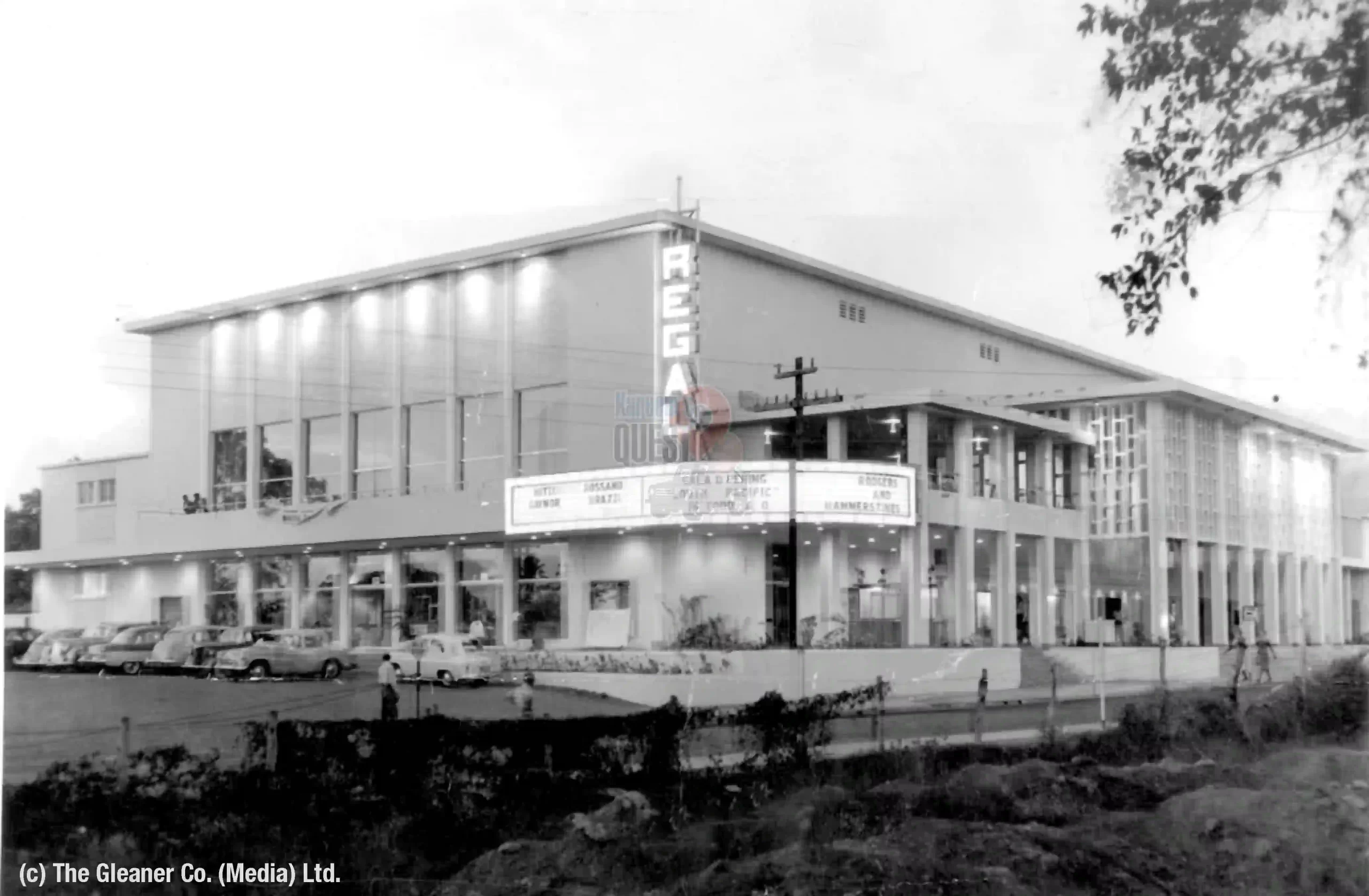
Beyond the adventure, drama, and excitement of a movie, Jamaicans share cherished memories of their cinematic experiences – from enjoying cotton candy at Premier to savoring mouthwatering beef sandwiches at the old Carib. The era of Lannaman’s candy at Imperial in Savanna-la-Mar and the street vendors selling oranges, peanuts, corn soup, sugar cane, and coconut jelly outside every cinema evokes a sense of nostalgia. Brands like Kisko pop, Fanta, Wink, and Nutty Buddy were also part of this cinematic journey.
The Early Days of Cinema in Jamaica

Before Jamaica gained independence, attending a movie was a patriotic act. Moviegoers would stand at attention and sing “God Save The Queen.” According to, The golden age of cinema in Jamaica, an article in The Gleaner, this song preceded the main feature, news reels from Pathé News in England, although often propaganda, played effectively in promoting emigration to England during those early years.
Full Episode on Theatres
The first cinema in Jamaica was opened in 1907 by the Palace Amusement Company, which later expanded to operate several theaters across the island. The company also imported films from abroad, mainly from the United States and Britain. In 1916, Jamaica hosted one of the most expensive films of its time, A Daughter of the Gods, which cost one million dollars and featured one of the earliest examples of nudity in mainstream cinema. The film was produced by William Fox, the founder of Fox Film Corporation, and involved the creation of a Moorish city and the employment of three thousand locals2
Video of the Week
While cinemas offered riveting entertainment, they also served as talent incubators for Jamaican artists in the ska, reggae, and rocksteady genres. The Regal Theatre in Cross Roads hosted a Saturday morning talent show for kids, while the Ambassador Theatre in Trench Town staged the famous Vere Johns Talent Show, a fast track to showbiz dreams for teenagers and young adults. Many of Jamaica’s music icons from that era, much to the delight of fans, graced these stages with their performances.

Author Dave Rodney, in his article The golden age of cinema in Jamaica, stated that Tony Cobb, known as “Cat Behind The Glasses,” played a pivotal role in promoting reggae shows at cinemas during the ’60s and ’70s. Cobb recalls bringing Bob Marley to the Capri Theatre in May Pen, helping the young artist overcome stage fright to deliver an excellent show.
Performances also extended to international acts, as Pauline Stone-Myrie, Jamaican actress and cultural specialist, shared in a Sunday Gleaner interview, “I saw Dionne Warwick and Nina Simone at Carib.”
Cinemas of that era were often multipurpose venues. The Ward Theatre in downtown Kingston, famous for the LTM pantomime, also screened movies. The diversity of entertainment offerings allowed audiences to enjoy double bills like “Student Prince” and “Seven Brides for Seven Brothers.”
The Harder They Come, released in 1972, is considered the most critically acclaimed Jamaican film, as it received international recognition and acclaim1 The film was directed by Perry Henzell, and starred Jimmy Cliff as a reggae singer who becomes an outlaw. The film also featured a soundtrack of reggae music, which helped to popularise the genre worldwide. The Harder They Come set the trend for many Jamaican films that followed, which focused on realism and music as central themes1
Jamaica’s Jolly Buses: School boy Memories
The Changing Landscape
Sadly, many of these beloved cinemas have disappeared, transformed into churches, shopping arcades, or factories. Advancements in entertainment technology have also made them redundant, as modern audiences can watch movies from the comfort of their homes. Additionally, today’s stage shows accommodate larger audiences, losing the intimacy of the past. However, the nostalgia for the days when cinemas were central to Jamaican entertainment lives on.
Source: The Gleaner
Top 6 Famous movies filmed in Jamaica


